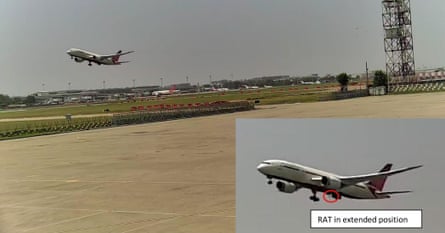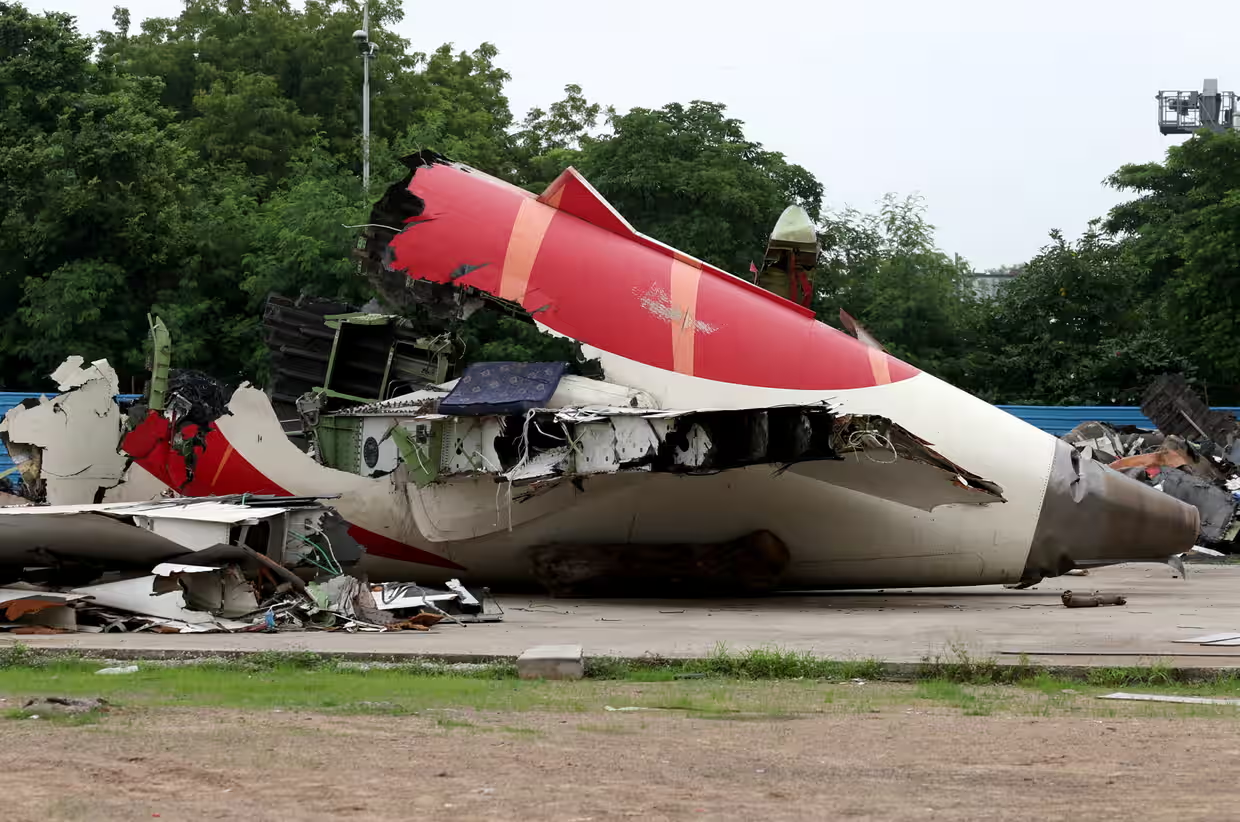World News
Why did he cut off?’: what the report on the Air India Flight 171 crash found
A preliminary report from investigators looking at the Air India Flight 171 crash, which killed 260 people on 12 June, has been published.
What has the report found?
Seconds after takeoff, both of the Boeing 787 Dreamliner’s fuel-control switches moved to the “cutoff” position. This starved the engines of fuel, and they began to lose power. The report says: “In the cockpit voice recording, one of the pilots is heard asking the other: why did he cut off? The other pilot responded that he did not do so.”
It did not identify who said what.
Turning off the fuel requires the operation of two switches, centrally located on the flight deck – neither of which are the kind of simple push-button that could be brushed against accidentally or moved without force.
Deliberate, malicious intent from either pilot would appear unthinkable given the record of the Air India officers in the cockpit. Switching off by mistake would also seem incredible. And yet human error cannot be excluded: as a pilot who flew Boeing jumbos for many years says, turning the switches on and off is something that pilots do – at the correct moment – on every flight, with the kind of muscle memory that makes a movement automatic. But this time the fuel was cut off after takeoff, while the landing gear was not raised.
At the time of takeoff, the co-pilot was flying the aircraft while the captain was monitoring. Seconds later, the switches flipped back to “run”, the report says, which started the process of relighting the engines.
One of the engines was in the process of regaining power at the time of the crash, while the other engine had relit but had not yet regained power. Both fuel control switches were found in the “run” position at the crash site.
2. Did it find anything else?
The report said CCTV footage obtained from the airport showed a ram air turbine (RAT) was deployed during the initial climb immediately after takeoff. The small wind turbine acts as a backup power source during emergencies and is normally only deployed during complete power failure.

At 8.07 am (UTC), the aircraft was cleared for takeoff. At about 8.09 am, one of the pilots transmitted: “Mayday, Mayday, Mayday.” The air traffic control officer did not get any response.
The report also found: “Both thrust levers were found near the aft (idle) position. “However, the EAFR [enhanced airborne flight recorder] data revealed that the thrust levers remained forward (takeoff thrust) until the impact.”
3. What happened before the flight?
The report said both pilots had an “adequate rest period before operating the said flight”. It added that the crew underwent a preflight breath analyser test and “were found fit to operate”.
The report said that the takeoff weight was “within allowable limits”. It added that there were “no dangerous goods” on the aircraft and there was no adverse weather. It added that fuel samples taken from the bowsers and tanks used to refuel the aircraft were tested and “found satisfactory”. “No significant bird activity” was observed in the vicinity of the flight path.
4. Inspections
The report said that in December 2018, the US Federal Aviation Administration issued a special airworthiness information bulletin based on reports from operators of model 737 planes that the fuel control switches were installed with the locking feature disengaged.
The airworthiness concern was not considered an unsafe condition that would warrant an airworthiness directive – a legally enforceable regulation to correct unsafe conditions.
The same switch design is used in Boeing 787-8 aircraft, including Air India’s VT-ANB, which crashed. The report added: “As per the information from Air India, the suggested inspections were not carried out as the SAIB was advisory and not mandatory.”
After Boeing was forced to ground a different model, the 737 Max, for more than a year after two fatal crashes – as well as the mid-flight blowout of a panel from a 737 Max – aviation experts no longer have implicit faith in Boeing’s machinery and software.
Investigators are still to examine “components of interest” but it seems significant that they have made “no recommended actions” regarding the Boeing 787 or the engine, for airlines or manufacturers.
As one senior industry source and ex-pilot put it: “There’s nothing here that is likely.” Aviation’s safety record – statistically the safest mode, despite recent tragedies – has long depended on examining not just the crashes but the near-misses, every deviation from the norm. Early speculation usually differs from the eventual cause or combination of causes, after manufacturers and airlines have tried to expunge every known risk.
5. What happens now?
The investigation continues. The report said wreckage had been moved to a secure area near the airport. Both engines had been retrieved and were quarantined at a hangar in the airport. Additional details were being gathered “based on the initial leads”, it added.
While a very limited amount of fuel samples could be retrieved from the APU filter and refuel/jettison valve of the left wing, the report added the testing of these samples would be done at a suitable facility.
Data downloaded from the forward-enhanced airborne flight recorder was “being analysed in detail”.
Comments



























